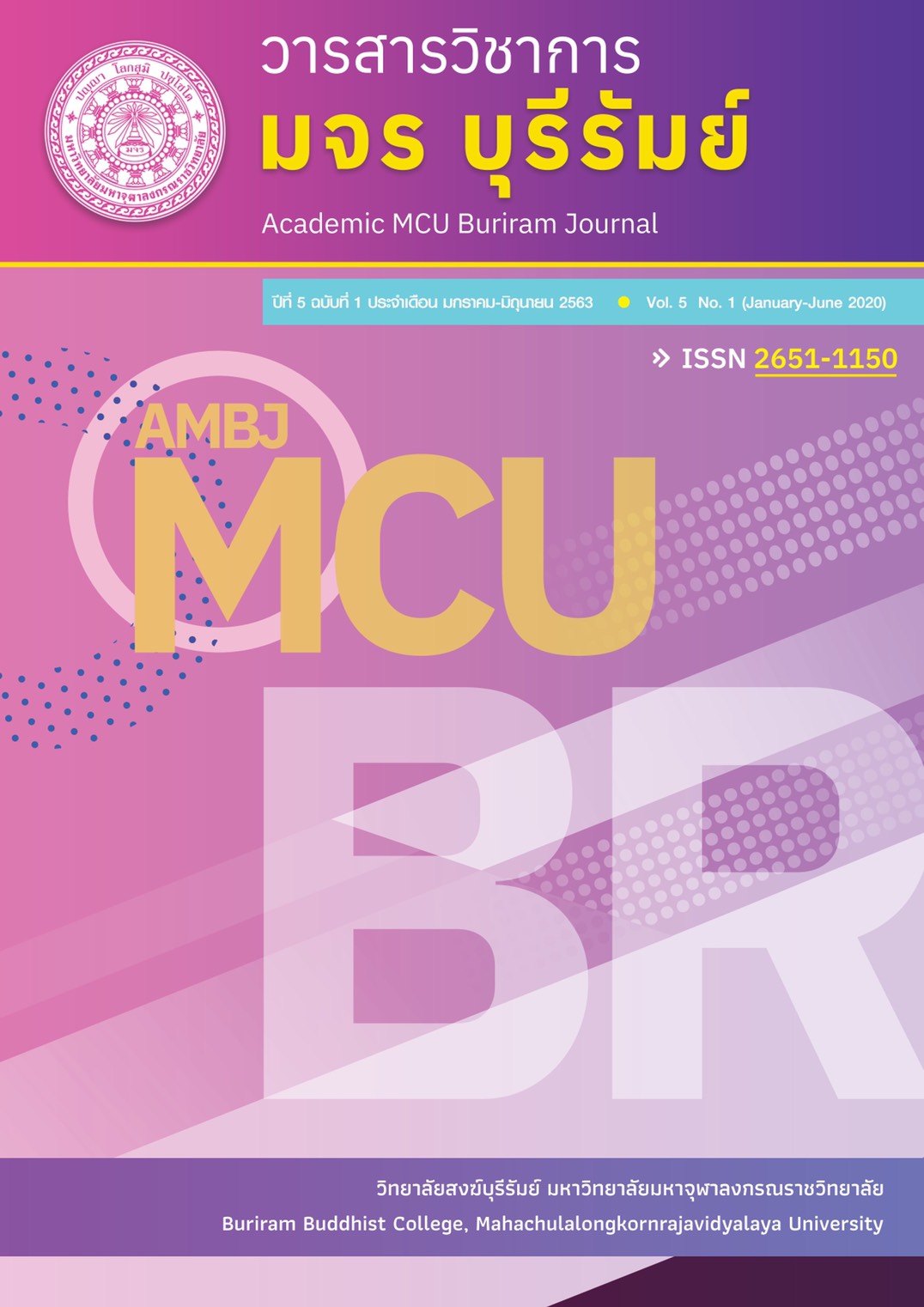A Comparative Study of Compound Formation in the Padarupasiddhi and the Laghusiddhantakaumudi
Keywords:
Samāsa, Padarūpasiddhi, Laghusiddhāntakaumudī, Ashthādhyāyī, kaccāyanaAbstract
This research article has 3 objectives as follows: 1) to study the forms of compound word creation with rules of grammar that appear in the Padarūpasiddhi in Pali, 2) to study the forms of compound word that created with the rules of grammar that appear in the Laghusiddhāntakaumudī in Sanskrit, 3) to compare the forms of compound word that created with the rules of grammar that appear in the in Pali and in the Laghusiddhāntakaumudī in Sanskrit.
The results of the research showed are as follows; it is evident that rules of grammar of Pali that appear in the Padarupasiddhi was written by the Bhuddhappiya in the late 15th century to the beginning of the 16th century whereas and rules of grammar of Sanskrit that appear in the Laghusiddhāntakaumudī was written by Varadarāj in the 17th century. In the late 15th century, the creation of compound words with rules of grammar in the Padarūpasiddhi all 28 rules are used, in the same manner all 79 rules are used in Laghusiddhāntakaumudī.
The Padarūpasiddhi text is a scripture that has rearranged the formulas from the Kaccāyana scripture and Tipitakas with more details, and brought an example from Tipitakas and other significant texts.
The Laghusiddhāntakaumudi is a text that has abridged the formulas from Siddhāntakaumudī, a text that has improved the order formulas in Panini text, compiled them in succession of words with a short and compact method.
The Padarūpasiddhi text showing Samāsa by the six names, namely 1. Abbayayībhāvasamāsa 2. kammadhārayasamāsa 3. Digusamāsa 4. Tappurisasamāsa 5. Bahubbīhisamāsa 6. Dvandasamāsa. The Laghusiddhāntakaumudī text shows that there are 5 Samāsa, which are 1. kevalasamāsa 2. Avyayībhāvasamāsa 3. Tatpurushasamāsa 4. Bhahuvarīhisamāsa 5. Dvandvasamāsa.
The meanings of each Samās in the Padarūpasiddhi text are as follows;
- That called Abyayībhāvasamāsa in which, for the most part, the sense of the first of its elements is the main one (or the independent one on which the other depends), is the 1nd kind.
- That called Tappurisasamāsa in which, for the most part, the sense of the last of its elements is the main one, is the 2rd kind.
- A subdivision of the Tappurisasamāsa class is called Kammadhārayasamāsa 3th kind,
- A subdivision of the Kammadhārayasamāsa class is called Dvigusamāsa 4th kind.
- That called Bahubbīhisamāsa in respect whereof, for the most part, the sense of a different word is the main one (to which the sense of the compound epithet is subordinate) is the 5th kind.
- That called Dvandasamāsa in which, for the most part, the sense of both the one and the other of its elements is a main one (neither being subordinate to the other), is the 6th kind.
The meanings of each Samāsa in the Laghusiddhāntakaumudī text are as follows;
- Here a compound means an aggregation. That which is destitute of any peculiar name, being “merely a compound,” is the 1st kind.
- That called Avyayībhāvasamāsa in which, for the most part, the sense of the first of its elements is the main one (or the independent one on which the other depends), is the 2nd kind.
- That called Tatpurushasamāsa in which, for the most part, the sense of the last of its elements is the main one, is the 3rd kind. A subdivision of the Tatpurushasamāsa class is called Karmadharayasamās, A subdivision of the Karmadhārayasamās class is called Dvigusamāsa.
- That called Bahuvrīhisamāsa in respect whereof, for the most part, the sense of a different word is the main one (to which the sense of the compound epithet is subordinate) is the 4th kind.
5. That called Dwandwasamāsa in which, for the most part, the sense of both the one and the other of its elements is a main one (neither being subordinate to the other), is the 5th kind.
Downloads
Published
How to Cite
Issue
Section
License
ทัศนะและความคิดเห็นที่ปรากฏในบทความวารสารฉบับนี้ถือเป็นความรับผิดชอบของผู้เขียนบทความนั้น ไม่ถือเป็นทัศนะและความรับผิดชอบของบรรณาธิการ





